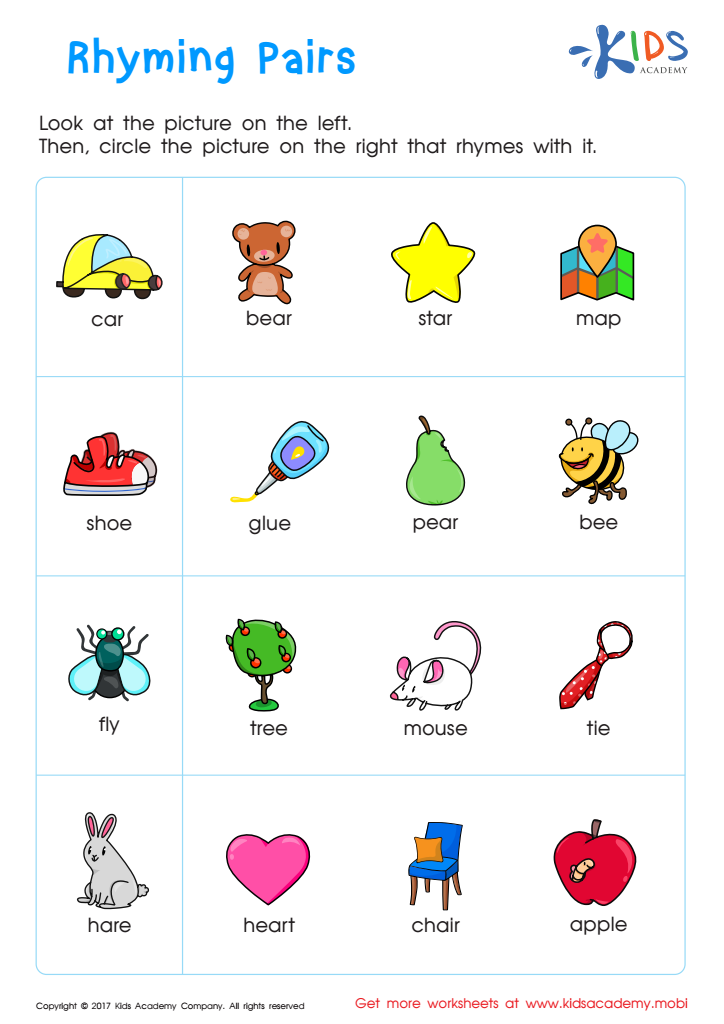Normal Rhyming Worksheets for Ages 6-9
13 filtered results
-
From - To
Introduce your child to the world of phonics with our Normal Rhyming Worksheets for Ages 6-9! Specially designed to boost your little one’s reading and spelling skills, these engaging worksheets make learning fun and interactive. Each exercise features charming illustrations and simple activities that encourage kids to identify and match rhyming words. Perfect for early learners, our worksheets not only build a strong vocabulary but also enhance literacy through playful repetition and pattern recognition. Ideal for classroom or home use, these educational resources are a delightful way to inspire a love for words and reading at a young age.
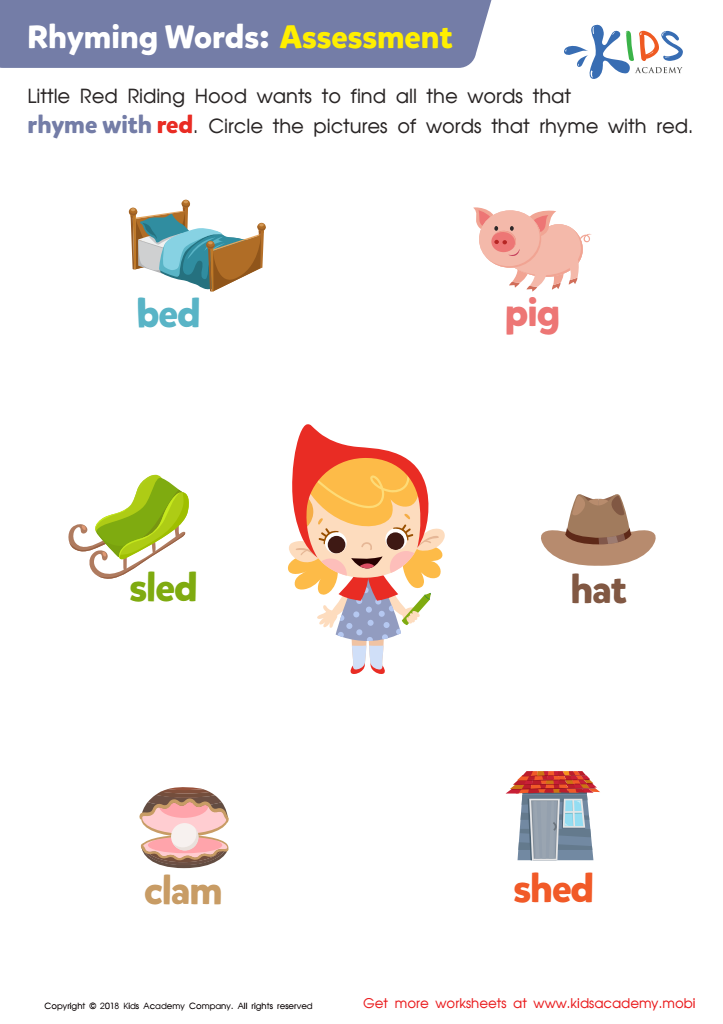

Rhyming Words: Assessment Worksheet
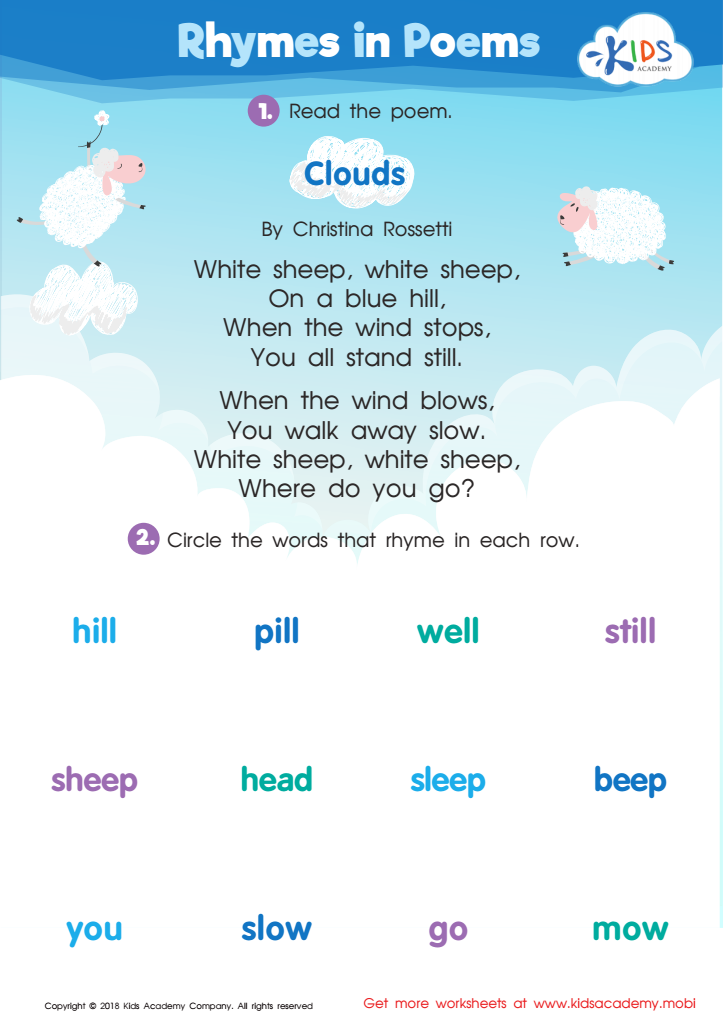

Rhymes in Poems Worksheet
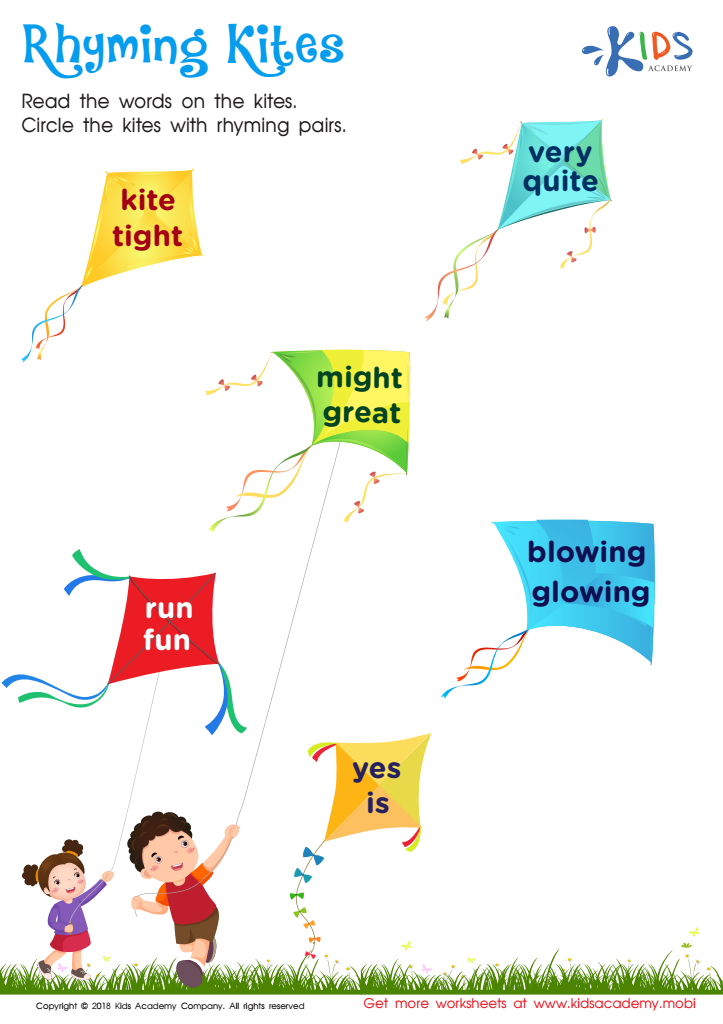

Rhyming Kites Worksheet
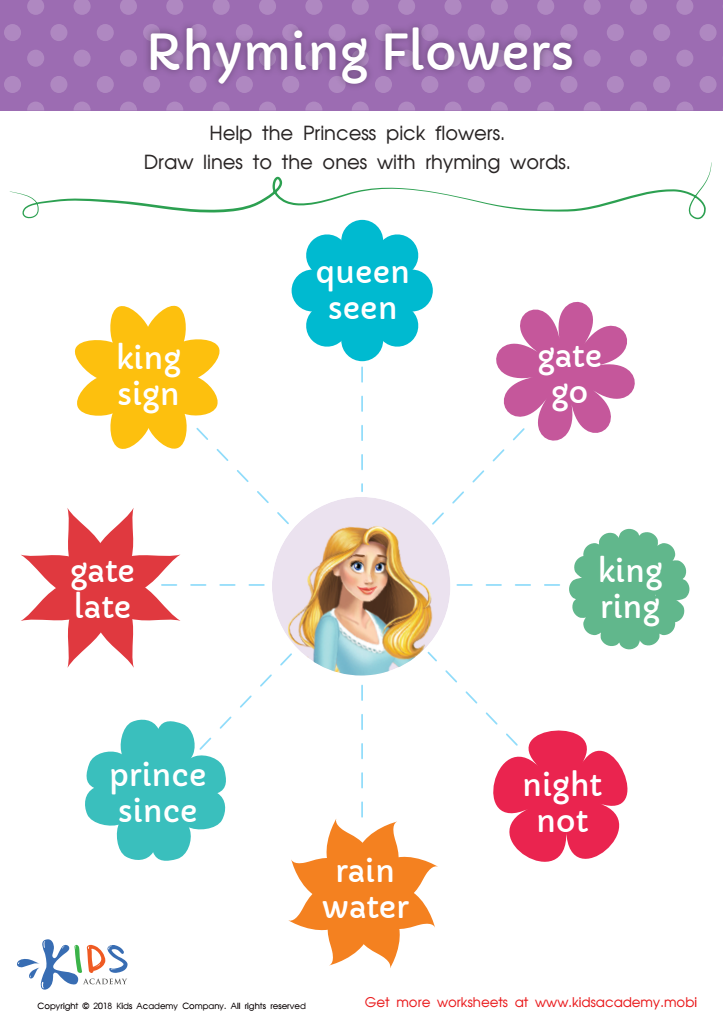

Rhyming Flowers Worksheet


Rhyming Words Rhyming Worksheet


Rhyming Words Worksheet
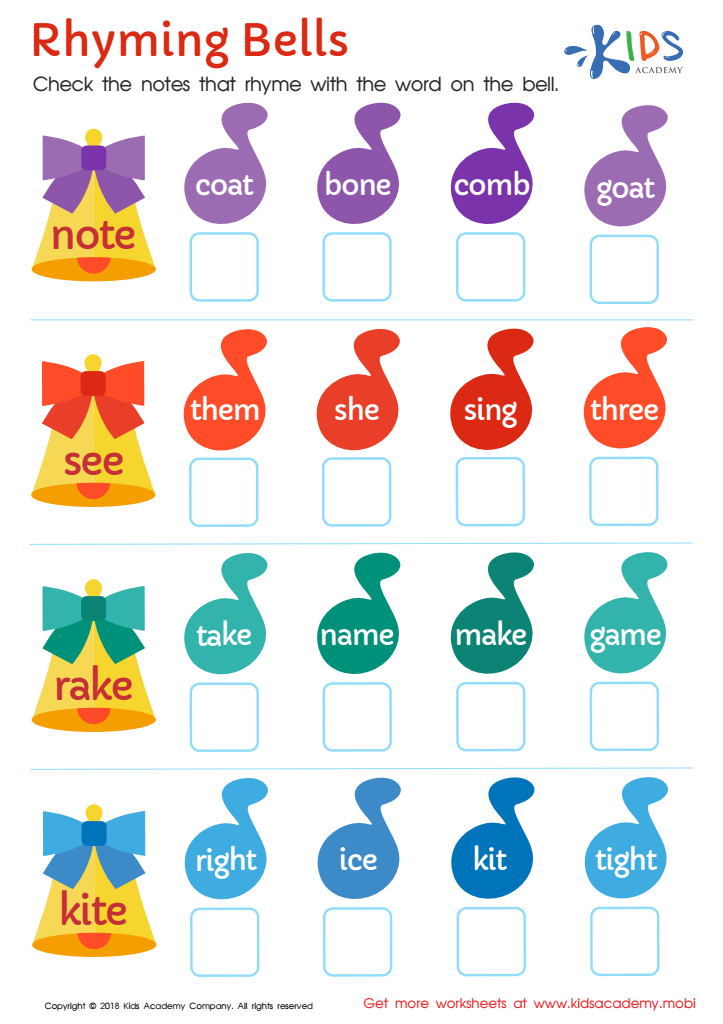

Rhyming Bells Worksheet
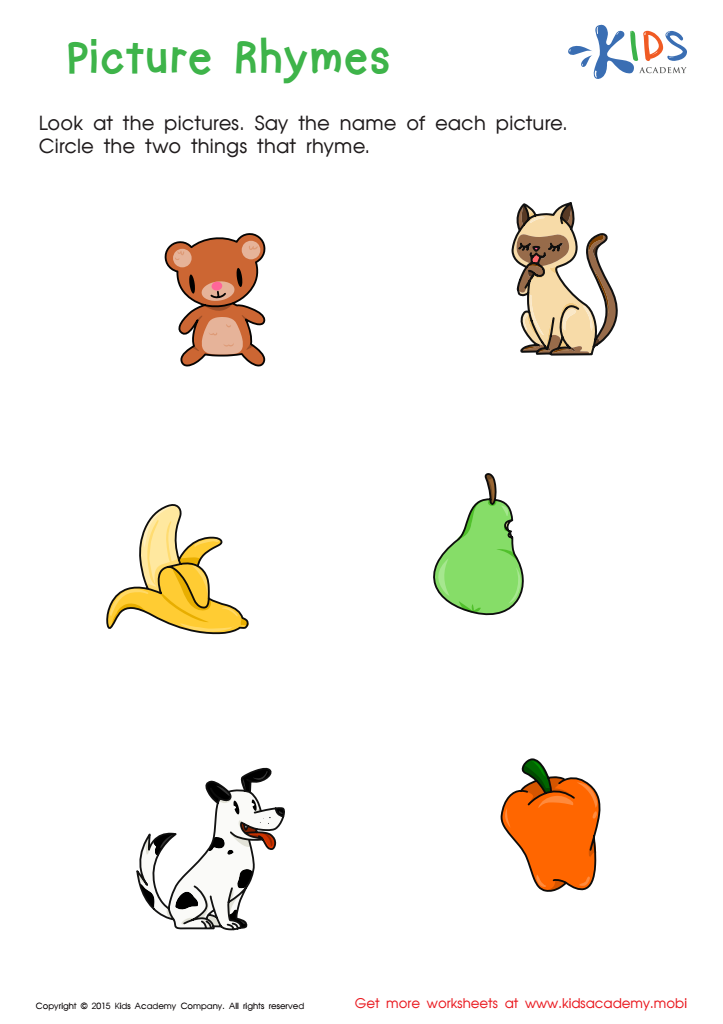

First Words: Picture Rhymes Worksheet
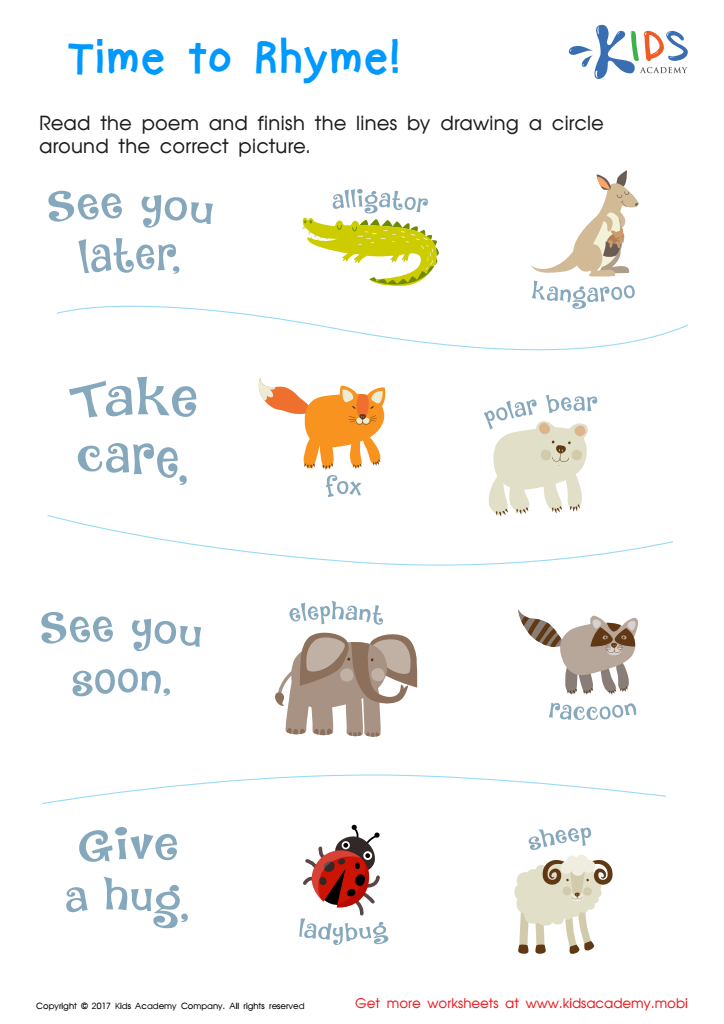

Time to Rhyme Rhyming Worksheet
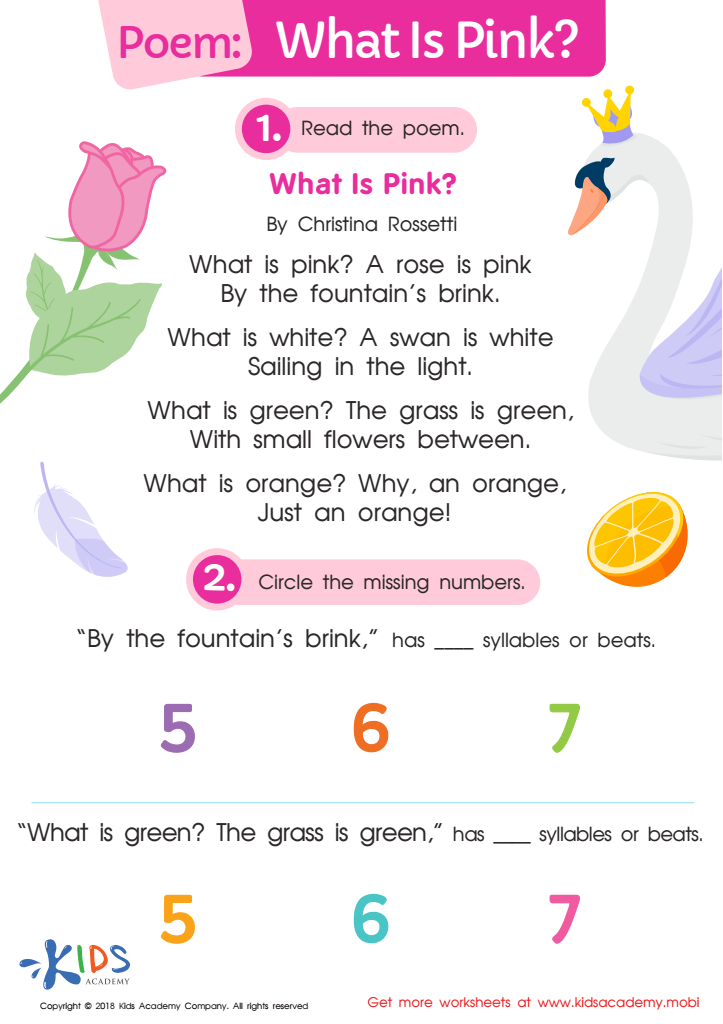

Poem: What Is Pink? Worksheet
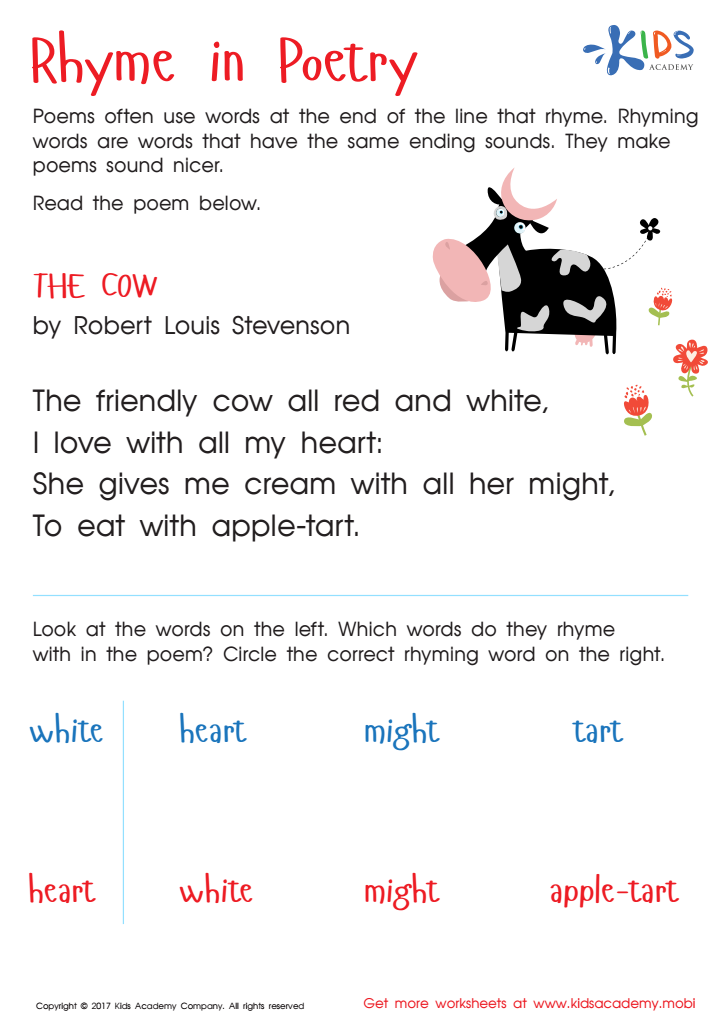

Rhyme In Poetry Worksheet
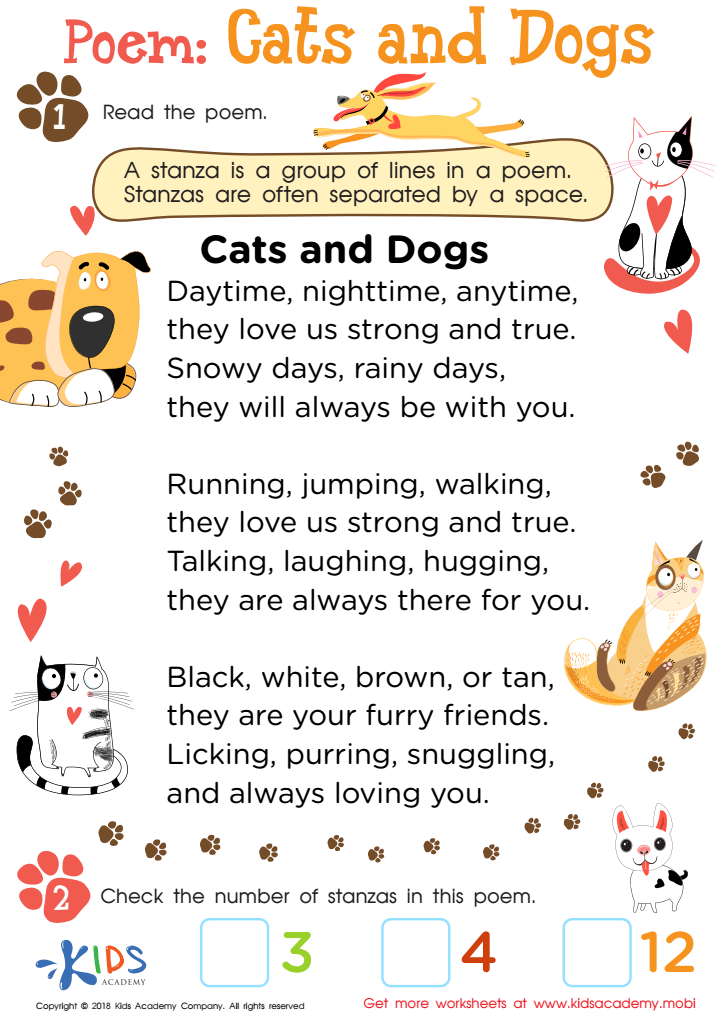

Poem: Cats and Dogs Worksheet
Normal rhyming is a crucial aspect of early childhood education, especially for children aged 6-9. During these formative years, rhyming helps to build foundational language skills that are essential for reading and writing. When children are exposed to rhymes, they learn to identify and predict sound patterns, which enhances their phonemic awareness—the ability to hear, identify, and manipulate individual sounds in words. This skill is a strong predictor of reading success.
Moreover, rhyming can also improve memory and recall. Rhymes and rhythmic patterns are easier to remember, facilitating the retention of new vocabulary and concepts. This auditory learning can be especially beneficial for auditory learners who absorb information better through listening.
In addition, engaging with rhyming activities fosters a love for language and literature. Rhymes make reading enjoyable and playful, encouraging kids to see books as a source of fun rather than just an academic task. This positive association with reading at a young age can lead to a lifelong interest in literature and learning.
Furthermore, rhyming activities often involve social interaction and collaboration, whether through singing, chanting, or playing rhyming games. These interactions help develop social skills, listening abilities, and cooperative teamwork among peers.
In summary, normal rhyming supports critical language development, improves memory, fosters a love for reading, and builds essential social skills, making it vital for young learners.

 Assign to My Students
Assign to My Students


